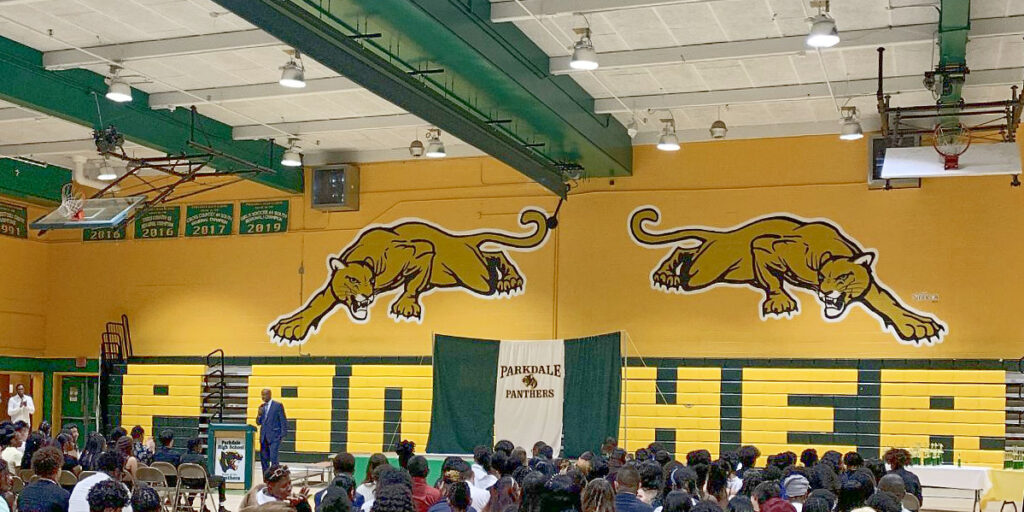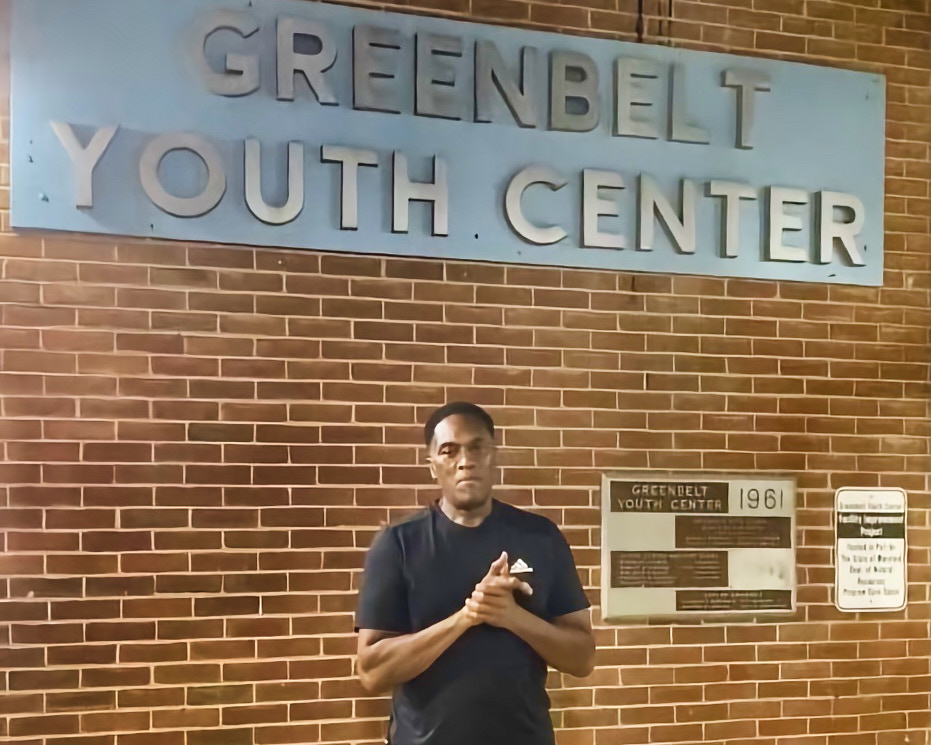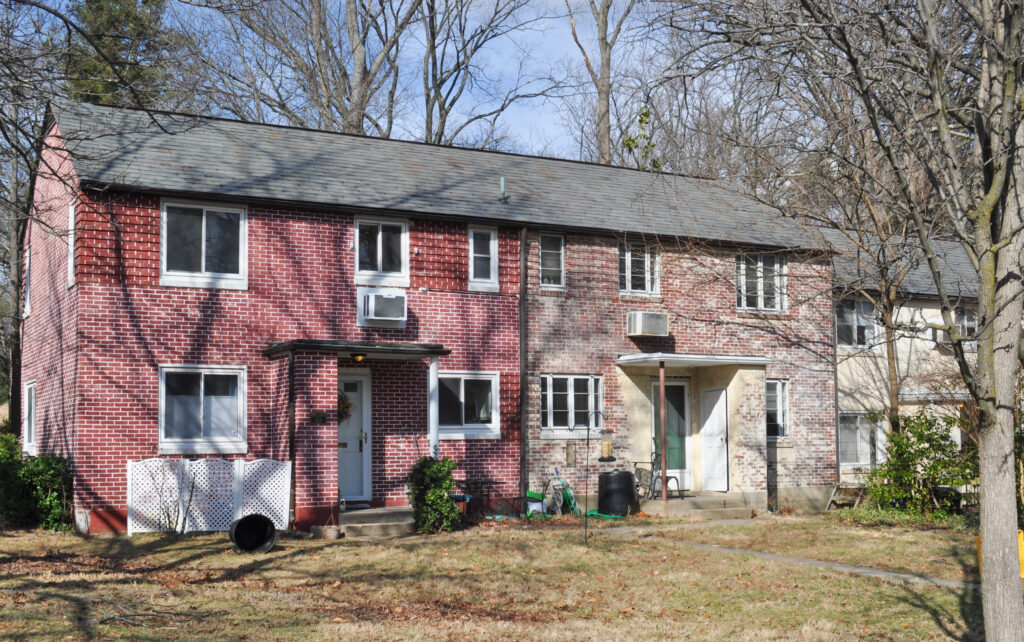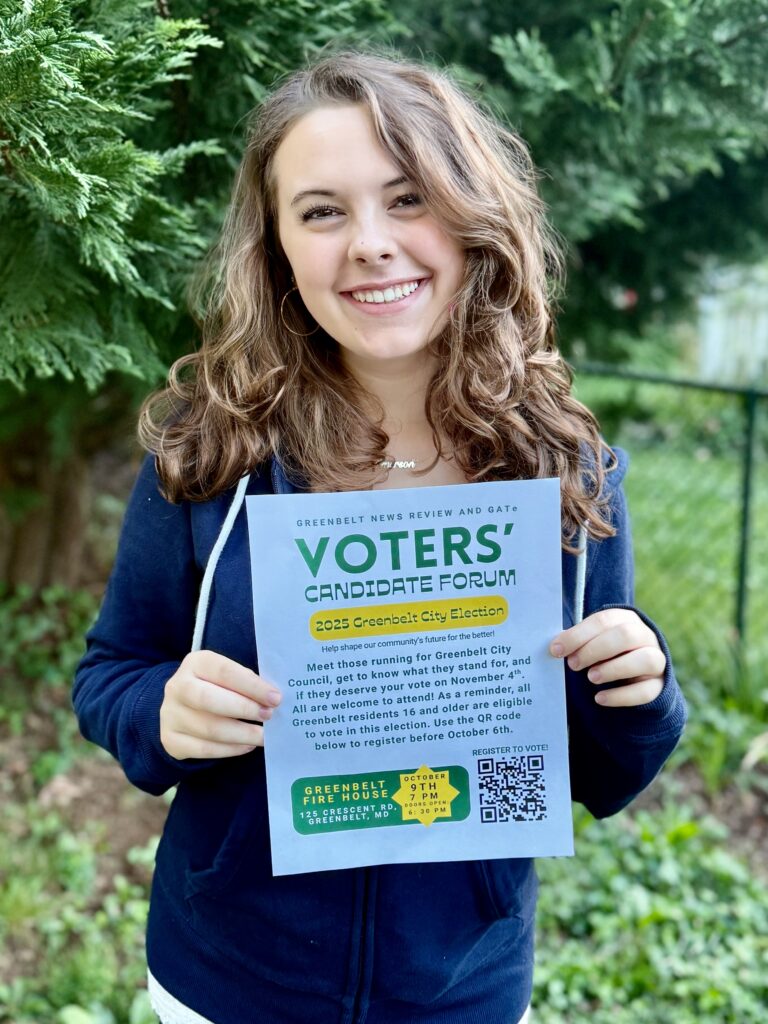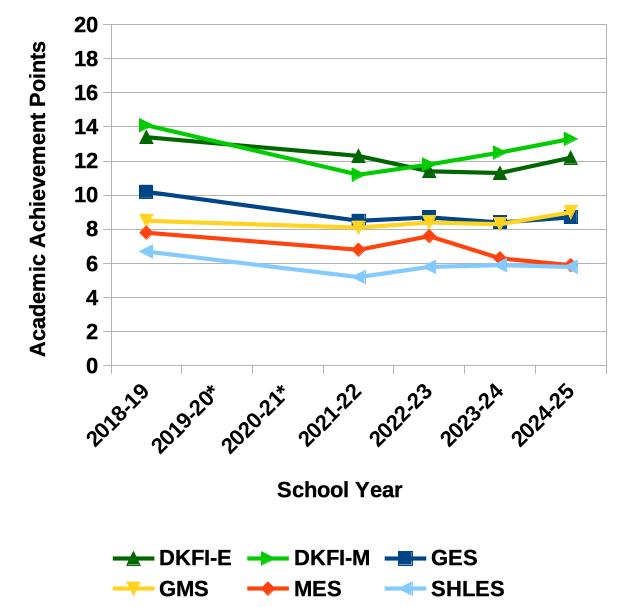Pennington Greene, a former Greenbelter, collegiate basketball star and national record-setter in his day, who was recruited to play for the Atlanta Hawks in the NBA after college, returned to his roots on Saturday, June 24 to host a well-received panel at the University of the District of Columbia (UDC). The event was sponsored by the HumanitiesDC (formerly known as the Humanities Council of Washington, D.C.) and others. He reviewed highlights from a forthcoming documentary he is producing on the history of Blacks in basketball. Greene’s oral history project, with hundreds of hours of video interviews conducted with some of the greats of basketball, begins as early as 1904 with the contributions of Edwin B. Henderson of D.C., who is credited with “building the infrastructure for Blacks to participate in organized sports by training officials and forming leagues.” Henderson was honored with the dedication of a statue of him at UDC, also on Saturday.
Greene credits his mother with changing the trajectory of his life by moving him from Baltimore to Greenbelt in 1969 to live in Springhill Lake. There he played basketball at Greenbelt Junior High and then became an All Met player for Parkdale Senior High. “She did what she always did; Joncier Greene made a decision to save her children ‒ especially her precocious Pennington,” he writes. It was 1969, when rioting after the killing of Martin Luther King, Jr. was overtaking both Baltimore and D.C. “Mom knew I was most likely to get caught up in the momentum of the ʼhood,” he said.
After the move to Greenbelt, said Greene in a personal essay, “I sought to find balance in this fresh environment with its own brand of diversity, culture, faith and social diplomacy … I had to admit I was experiencing culture shock … In the 8th grade, I walked into a gymnasium filled with an energy I had never encountered in one place. A scheduled basketball game ‒ gave way to supervised, mass enjoyable, welcomed hysteria …. If playing ball could do all of this, I was in. I began my strategy by joining a Greenbelt youth league, building my fundamental skills of dribbling, passing, mastering my shot and HEART. If you don’t have heart, all the other means nothing. There is a level of passion that a true baller must embody, and any individual for that matter, but especially in order to have a successful career in basketball.” The essay also documented the January 20, 1971, game (his 9th grade year) when he witnessed Parkdale High School (Panthers) beat Saint Anthony’s High School (Tonies) coached by Hall of Fame coach John Thompson – a historic upset of the “Number One High School in the Country.”
Greene began his passion project almost 40 years ago, about the time his beloved mother died from breast cancer. He began collecting the statistics on outstanding high school and college players, initially going through microfiche at the Library of Congress of old newspaper reports of key All Met players in the D.C. area each year, including himself. By then, thanks to his college education, he was working for Fortune 500 companies such as Xerox. Greene wanted to see, “what was in the water,” in this area that enabled it to produce so many of the most outstanding players in Division I college schools all across the country, and the NBA. Working with the Smithsonian, sports reporters from the Washington Post and other authors, he curated an extensive archive of the achievements of hundreds of record-holders, some of which he has posted on his nonprofit’s website: DCBasketball.com, where the homepage has an inviting trailer for his new documentary, Supreme Courts: A Century of D.C. Area Basketball.
Greene still remembers with fondness then-Parkdale coach Stan Kernan, who got him to the elite level in the next three years of his youth after he moved to Greenbelt. In a game against Anne Arundel his senior year, Greene scored 39 points on his own, to chants of “Greene Machine!” Parkdale’s colors were green and gold, so his name was fortuitous, but the chants of the crowd were clearly for their star, Penny Greene.
An injury sidelined Greene’s own NBA career, but one of his favorite memories was receiving a standing ovation in Madison Square Garden after a particularly high personal scoring game. He reached over 1,000 points playing at the University of South Florida, the first player ever to do so at that school. After turning down Georgetown Hoyas famed coach, John Thompson (the same one Parkdale beat a few years before), he followed ACC Coach of the Year Bill Gibson (1972, Virginia University, Lynchburg) to the University of South Florida.
At a combined 50ish Parkdale High School reunion last September (classes of 1970 to 1974), Greene learned that Parkdale had just renovated the gym, and in renovating the space, contractors had painted over the Panther logos painted 49 years before by a gifted artist ‒ a student at the school ‒ who had been a classmate.
Greene immediately set to work with former Prince George’s County Councilmember Anne MacKinnon (who had been their class president) to see if the Panther logo could be repainted. Peter Stevenson (Parkdale ’73), now a renowned commercial artist, agreed to come back and take the time during the school’s spring break to repaint his original masterpiece. Together Greene and MacKinnon organized a fundraiser to help underwrite the costs, and at a school athletic awards ceremony in that gymnasium at Parkdale on June 1, members of the classes of ʼ70 to ʼ74 also came back and both Greene and Stevenson spoke about the project. Greene was a keynote speaker for the current Parkdale athletes and received multiple rounds of applause for his motivational talk.
Greene’s documentary about D.C. area basketball is still in production but more information and clips can be accessed at thesupremecourtsdoc.com.
Edith Beauchamp attended Greenbelt Junior High and graduated from Parkdale with Greene.
Panel discussing highlights from the making of “Supreme Courts: A Century of DC-Area Basketball,” L to R: Vinnie Perrone, Bob Kuska, Greene, Lloyd Mayes, and Kyle Yeldell.
